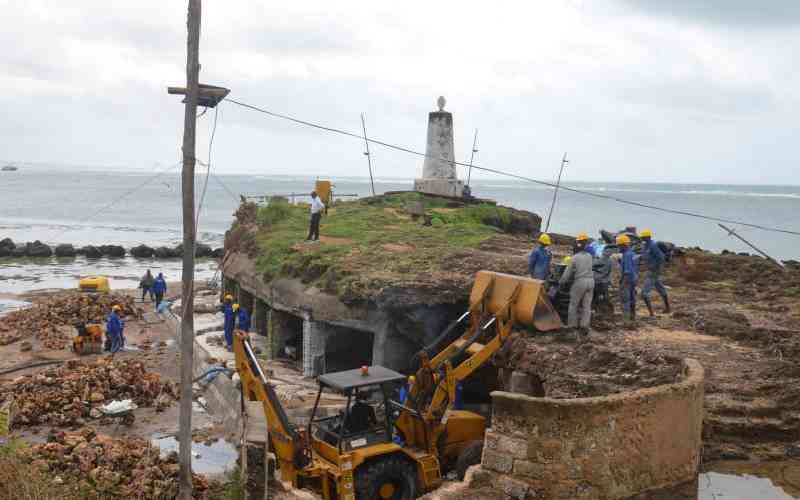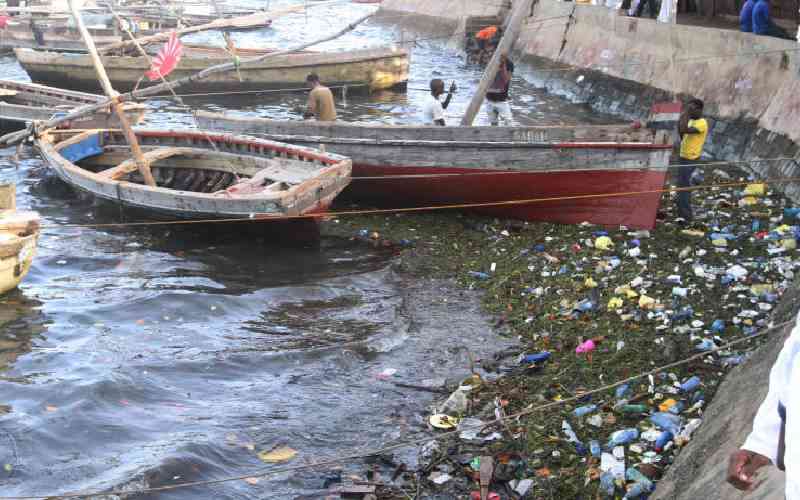By Joe Ombuor
Taking the 45-kilometre cruise across the Indian Ocean, into Zanzibar, off the African mainland, is like retracing the history of slave trade.
On landing at Stone Town, the ancient capital of Zanzibar, the infamous slave market where human beings were auctioned, like animals destined for the abattoir, is a short walking distance away. But I prefer to start my journey at Mbweni, about 10 kilometres away, at a site choking with ruins, graves and a church built where a village for liberated slaves once stood.
 |
The mkunazi tree where slaves were flogged to test their mettle. [PHOTOS: JOE OMBUOR/STANDARD] |
Within Mbweni are the ruins that served as school for freed girl slaves. A round, mud-walled hut with tiny wooden windows is all that’s left of the house for the freed slaves, before a village was built for them by early Christian missionaries, one kilometre away.
A 15-minute walk under the scorching sun brought me to St John’s Anglican Church of Christ, Mbweni, built almost a century and a half ago in what was the village for freed slaves. Today, it has ceded part of it to Zanzibar State House.
The church is a study of graves and tombs, most of them squeezed in to accommodate the remains of the freed slaves, their descendants and priests. I was conducted around by a son of a freed slave, 75-year-old Peter Sudi.
"I lived with my parents at the slave village over there," he says pointing to the garden across the church compound that today is the property of Ikullu (State House). Among the graves Sudi took me to was that of Caroline Thackerary who, for over 20 years, was the principal of the school for freed girl slaves. She is buried behind the church.
Many graves have broken or fallen epitaphs, with some pulverised by the elements to the ground. We pick our way through the labyrinth of graves and stop by one with its epitaph still intact.
"This is my uncle, Deacon John Sudi. He was one of the masons who built this church whose construction was completed in 1876.
"He was much older than my father, who also lived to be a deacon. I had the privilege of living with him at a hut over there, before he died in 1944, aged 95 years."
Sudi says his uncle was aged 18 when the Arabs captured him at his home on the mainland and sold him into slavery. "We belong to the Ngindo tribe that inhabit the area between Lindi and Mtwara in Southern Tanzania," says Sudi. His father, Mzee William Sudi is buried in the compound of the Anglican Church of Christ in Stone Town.
Among the oldest graves at the church compound is that of Rehema Mambutina, a freed slave who died in 1888. Sudi regrets the vandalism on the epitaphs.
"Many people have come here, some from as far as Mozambique, looking for the graves of their relatives, but to no avail. It is sad," he laments.
The many graves aside, St John’s is the only church with writings above the doors done in Arabic. Sudi says Arabic was the language of all religions on the island in the early days. "We were taught Arabic and I speak it. The writing above the entrance to this church translates into "House of God", he says pointing at the faded writing.
Stay informed. Subscribe to our newsletter
The Arabian influences are manifest to date. I attended Sunday prayers in the church. As happens in mosques, women sat together on the pews on one side, while men occupied the pews on the other.
"Why is State House encroaching on the church compound?" I asked Sudi. He shook his head and shrugged, choosing to reserve his comments. "You see, the house where Sir John Kirk, the Scottish explorer and botanist who convinced Sultan Barghash bin Said to ban slave trade lived was over there, beyond the chain link in State House compound. You cannot be allowed to go there. Madam Thackerary’s house was also there".
 The Standard Group Plc is a
multi-media organization with investments in media platforms spanning newspaper
print operations, television, radio broadcasting, digital and online services. The
Standard Group is recognized as a leading multi-media house in Kenya with a key
influence in matters of national and international interest.
The Standard Group Plc is a
multi-media organization with investments in media platforms spanning newspaper
print operations, television, radio broadcasting, digital and online services. The
Standard Group is recognized as a leading multi-media house in Kenya with a key
influence in matters of national and international interest.
 The Standard Group Plc is a
multi-media organization with investments in media platforms spanning newspaper
print operations, television, radio broadcasting, digital and online services. The
Standard Group is recognized as a leading multi-media house in Kenya with a key
influence in matters of national and international interest.
The Standard Group Plc is a
multi-media organization with investments in media platforms spanning newspaper
print operations, television, radio broadcasting, digital and online services. The
Standard Group is recognized as a leading multi-media house in Kenya with a key
influence in matters of national and international interest.










